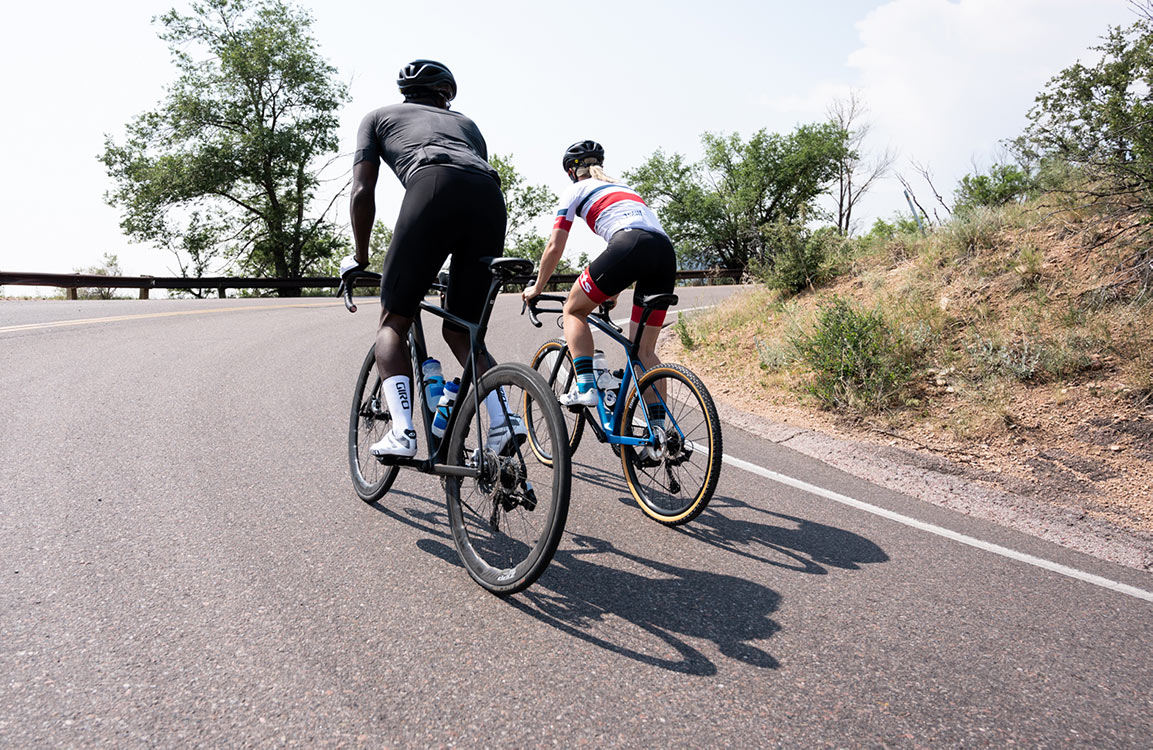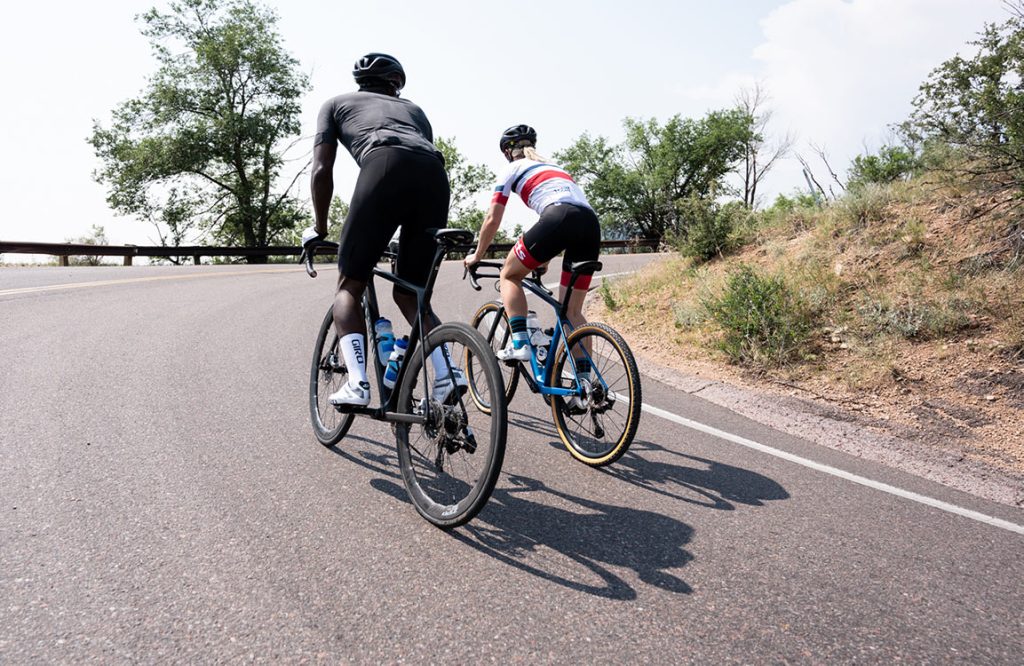Increasing Cycling Power
There are several ways in which you can increase your cycling power output. A number of these are based on the specific areas of cycling that require improvement and involve both physical training and psychological aspects. To begin with, one significant way of improving the power-to-weight ratio is focusing on high-intensity interval training. For example, conducting training sessions where you sprint for 30 seconds and have 4 minutes of easy cycling afterward for six weeks can be beneficial, increasing power outputs up to 5%. Other benefits of focusing on these intervals include the development of maximal oxygen uptake, which in turn translates into increasing the overall speed and endurance.
Furthermore, implementing strength training into the routine is vital. The recommendation is to focus on compound moves, such as squats or deadlifts, occurring twice a week for the best results. Another consideration is better fitting and mechanics of the bike. For instance, the study by O’Donnell and Ceniti indicated that optimizing the handlebar position and saddle height without a need to increase the mechanical work enlarged the power output by 3-4%. Moreover, focusing on the correct nutrition can also be beneficial. Specifically, high carb intake should be spread throughout the day, with a recommendation to consume around 6-10 g of carbs per kilogram of weight. This could be particularly important in terms of the long-distance rides or races.
From a technological and gearing perspective, it can be advised to focus on lightweight and aerodynamically shaped gear. For example, aero wheels can save up to 40 seconds on a 40 km time trial. Another recommendation is focusing on developing psychological resilience. There are multiple approaches used by elite athletes, such as visualization simulation or written down goals. Finally, proper rest and sleep, such as 9 hours of sleep a night, can increase the power output by 9%.
Reducing Body Weight Sensibly
Reducing body weight appropriately is a key step in enhancing the power-to-weight ratio. The purpose is not only to reduce fat, thus increasing the operation of the muscles and consequently that of the entire organism but also to avoid excessive weight affecting performance. Both mental and physical conditions play a significant role in achieving balanced body weight. Measures include diet, exercise, monitoring progress, and sleep. More importantly, understanding this issue which can include a reference to relevant professionals.
The diet is a central condition for the balance of the muscles and the physical appearance of a cyclist. To reduce muscle usage and not meet the caloric value of proteins, proteins of high biological value should be used. In the study by Purdom et al. one month after the athletes’ 20% increase in the participant’s caloric value from protein, they experienced less body fat and lean mass as well as muscle efficiency improvements. The results of the 4 mentioned measures were statistically significant.
Regular exercise plan
A regular exercise plan that incorporates muscle strength includes air or water activities with profound effects on the power to weight ratio. Activities that include muscle power such as fast walking can be performed on air and swimming feet. Remaining two feet off the bottom of the punched floor is a good exercise to support muscle strength. Pressure exercises especially enhance upper limb strength and flexibility, and upper body tone. Two times a week of core and lower limbs strength exercises increase the muscle tissue of the regimen of muscles.

Monitoring results.
Analysis of quantitative data must be regularly performed. In this respect, functional threshold power and body composition scales as the test should be provided. The number of the participant was 10%, body fat percentage was 5%. 3%. In this interim phase, the person is working on increasing the power to weight ratio perimeter by 5%. If they feel stable, the exercises and food will reach as desired.
Hydration and sleep
Dehydration occasionally impacts performance and slows metabolic processes when athletes instigate urge and affection. Appropriate treatment in check. It arise with an improved stimulation and treatment rate lack of stand-by process effect. The stress stress athletes’ need to recover through optimal rest time for muscle reconstruction and adaptation to reach the desired tonnage.REACTIONS FROM ELSEWHERE AND STANDARDS.
Lessons from the experts
In the end, we can act on the fact that “it doesn’t weigh, but it doesn’t slow you down”. Which allows reasoning or words A top-class distance runner langue said, a top-class biker is better and more worked out to perfection. Keeping fit takes a lot.
Balancing Diet with Training
Optimal power-to-weight ratio is a strong diet and training balance. It is not just that the cyclist goes on a diet, but it is also about fueling their body. Because cycling is a high-performance workout session, the restoration phase is also significant, and the balance is the key in this aspect as well.
Establishing a nutrition plan
The first step towards the right nutrition plan is establishing a goal and developing a diet based on that. The daily calorie needs should be calculated based on the intensity of the training when the cyclist exercises heavily, they will need to increase their caloric intake by 30%, focusing on carbs, which are used for replenishing glycogen stores. Tools like Harris-Benedict equation can be used for clarifying individual needs and achieving the target.
Macronutrient balance
The right balance of macronutrients is important both for fueling the workout and assisting recovery. The desirable balance is 60%:25%:15% for carbs:proteins:fats for endurance athletes. This balance provides the cyclist with enough energy for a sustained activity during their ride and also helps in muscle recovery, which includes muscle rebuilding after a workout.
Meal timing
It is also important to remember that meal timing is significant, pre-ride meal should comprise a lot of carbs to provide sufficient energy for the ride and should be eaten approximately three or four hours before the ride. The post-ride meal should be protein-rich for muscle recovery, for instance, a protein shake should be consumed in 30 minutes..
Integration of supplements
Whole foods are key, but supplements should not be dismissed, especially when the need is high. For instance, high training volumes call for BCAAs or Omega-3, which can help with muscle recovery and inflammation reduction.
Real-life examples
Professionals like Chris Froome, whose diet is tailored based on the intensity of his workout, can serve a great example for everyone. When he is intensely training, he is on a high-carb diet, but when the training is less intense, his focus is more on proteins and fats.
Tracking Progress Over Time
Cyclists can effectively improve their power-to-weight ratio through careful tracking of their progress over time. This involves the use of both quantitative and qualitative data which measures improvements and allows for data-driven adjustments to training and diet.
Setting the Baseline Metrics
The first process to track progress is to create a baseline set of metrics. These can include initial stats and weight, body fat percentage, muscle mass, and key performance metrics such as VO2 max, and FTP. For example, through periodic FTP tests, a cyclist can set a start point and attempt to beat that point in the future.
Leveraging Technology
Modern technology provides cyclists with a means to measure their fitness progress beyond simple weight tracking. Power meters and heart rate monitor connected to a phone and paired with a suitable app can be an essential part of the toolkit. For example, performing a ride on a specific course of similar environmental conditions while measuring power meter output over time allows cyclists to directly compare performance to previous recordings.
Regular Testing
Regular testing is necessary for tracking progress, with monthly check-ups potentially allowing for the reassessment of key metrics on both fitness and body composition. These metrics can then be ranked against the start point to determine if there have been any measurable improvements or if adjustments to the training plan need to be made.
The Use of a Performance Journal
A performance journal is a highly beneficial tool for cyclists to track performance, as it serves as a record of all relevant qualitative and quantitative information. For example, a journal should not only contain the riders’ weight and exercise routine but also information on how they felt during a specific day. If the cyclist noticed a faster recovery than usual or started associating a type of food with higher energy, this data can be useful in the context of the overall training and diet plan. Finally, the use of external feedback from a coach or mentor is a good method of tracking one’s progress, ensuring that the cyclist is not only keeping up with the numbers but is also learning better technique and training methodologies.

Adjusting Goals Based on Data
A data-driven approach to goal setting is crucial in the process of optimizing power-to-weight ratio. Such an approach affords a high degree of precision to the adjustment of training and diet goals of any given cyclist, contributing to overall performance and reducing the negative impact of suboptimal training. The most basic principles and relevant considerations of data-driven goal setting are as follows:
Interpreting trends — the data trends in which the adjustments to goals are rooted are the most important aspect of adjusting them. Accordingly, a cyclist should watch for a regular assessment of improvements in power outputs, endurance, or changes in body composition. For instance, an improvement in power output and body fat percentage would call for setting a diet goal.
Setting responsive goals — these are goals based on the data to which they respond. In cases when a cyclist’s goals are quickly met, they can set more difficult, advanced goals. When their goals are not met for an extended period, setting interim, intermediate goals they can achieve becomes appropriate. An example of the latter is adjusting “increase FTP by 10% within three months” to “increase it by 5% within the same timeframe” to give the athletes a sense of accomplishment and maintain levels of motivation.
Integrating data from multiple sources — utilizing information from multiple sources, such as nutrition tracking apps, training logs, and physiological tests to inform goals is a way to get a more detailed optimal decision. Regardless of the source of such data, collecting multiple types and applying the resultant information to purpose-generating decisions benefits not merely training intensity but diet planning, as well.
Consulting regularly with nutritionists and trainers — using the expertise of such professionals in data comprehension is helpful in achieving a comprehensive understanding of the data. Analyzing the data with the aid of a trainer helps account for individual differences and set targets appropriate to the cyclist’s body and experience, adhering to the best practices in sports sciences.





